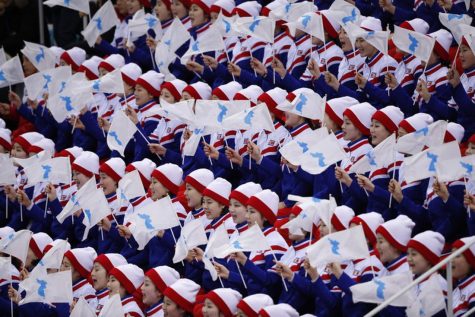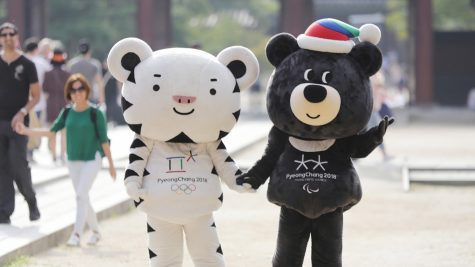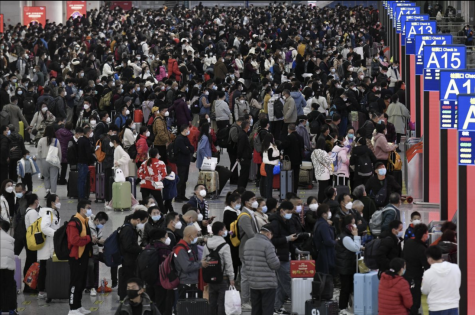Festival of the World: 2018 PyeongChang Winter Olympics
 Link to image: https://www.specifier.com.au/wp-content/uploads/2018/02/Opening-and-Closing-Ceremony-stadium-2.jpg
Link to image: https://www.specifier.com.au/wp-content/uploads/2018/02/Opening-and-Closing-Ceremony-stadium-2.jpg
Amidst excitement and anxiety, the 23rd PyeongChang Winter Olympic Games commenced at the PyeongChang Olympic Stadium in PyeongChang-gun, Gangwon-do on February 9th of 2018. Under the slogan, ‘Passion. Connected,’ 2,925 athletes from 92 countries competed in 102 events. This was a remarkable participation record as only 88 countries participated at the 2014 Sochi Winter Olympic Games. One exceptional moment of this event was when North and South Korea entered the Olympics together, marching under the Korean Unification Flag. They showed hope of reconciliation and unity.
 Link to image: http://kfgo.com/news/articles/2018/feb/15/north-korean-cheerleaders-appear-at-south-korean-mens-game/
Link to image: http://kfgo.com/news/articles/2018/feb/15/north-korean-cheerleaders-appear-at-south-korean-mens-game/
The Olympics intensified with the squad of North Korean cheerleaders. Their passionate clapping and singing of the song “Welcome” originally sung by Ri Kyong Suk – a traditional North Korean song – attracted attention from the international community. Their choreographed dance movements further added to the exciting atmosphere. Many South Koreans praised the North Korean cheering squads for supporting both North and South Korean players. However, as with many occasions, there was also some criticism. More skeptical audiences, like the South Korean citizen and avid Winter Olympics supporter, Kim Jin-sook (62/a UNIS Student’s family member), said that the North Korean cheer-leading squad was “awkward, mechanical, and old-fashioned” while viewing one of the unified North-South Korean hockey games.
Link to image: https://news.cgtn.com/news/77416a4d33677a6333566d54/share.html
There were two endearing mascots for this occasion: a white tiger and a black moon bear. Their names are ‘Soohorang’ and ‘Bandabi’, respectively. It is no coincidence that both of these characters are representative national animals of South Korea.
Are you perhaps wondering what the meaning of the word ‘Soohorang’ is? Well, according to the official Pyeongchang Olympic website, there are several hidden values to this aesthetic name. “Sooho” means protection in Korean, symbolizing the protection offered to the athletes, spectators, and other participants of the event. “Rang” is not only the middle letter of “Ho-rang-i”, the Korean word for ‘tiger’, but is also the last letter of “Jeong-seon A-ri-rang”, a traditional folk song of Gangwon Province, where the Games will be held.
Soohorang was well-received by the public including the audience and the national athletes themselves. As one of the most popular Olympic souvenir by far, Soohorang doll was out of stock in the Pyeongchang official store when the event was ongoing. The irresistible cuteness of the mascot is obvious. According to an article from the digital newspaper outlet, “The Korean Herald” written by Catherine Chung (published Feb. 21st), a Dutch man was caught stealing a total of six mini Soohorangs at the souvenir store on Feb. 20th. The man said, “I tried to buy a Pyeongchang Olympic souvenir for my daughter in Holland, but there was no sales staff and the door was closed,” and told the police “I just took the souvenir from the box.” Fortunately, the shop owner did not hold him accountable for this incident, and it ended well.
Undeniably, many Koreans are proud that this year’s Winter Olympic was held in their country. Even UNIS Korean students were hyped about this event as well; Hyewon Seo (Grade 11, student) said,
“Because this is the first time that the Winter Olympics took place in Korea, I was delighted! Through this event, I learnt about many different winter games, and became particularly interested in the Skeleton and Curling. I also felt the possibility of unification of Korea when the North and South Korean players were playing under the same flag!”
Although prior to the event, both the international and national citizens expressed concerns regarding the lack of preparedness, these initial concerns were blown away once they saw the opening ceremony that effectively combined tradition and information technology, the excellent Olympic village, and the amazing food provided to the athletes. Worldwide spectators and supporters truly believe that athletes will continue to make their best efforts to pursue their dreams by fully and fairly participating in each of their games even after the closing ceremony. As UNIS students, we should keep on encouraging our admirable athletes and help them reach their full potential in future events. One of the youngest medalist of the Olympic was the speed skater Min-seok Kim who vigorously fought for his medal along with his fellow team Korea in many of the speed skating competition. We should be inspired by such young members’ achievements and passion to strive for what they believe in.





